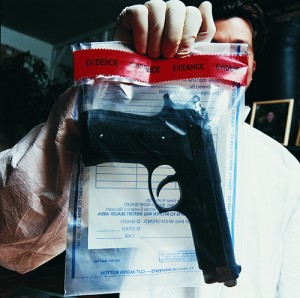
Sometimes my office receives a phone call from a potential client asking me to evaluate their case based on the facts in evidence to see how strong the prosecutor’s case is. I explain the types of evidence including circumstantial and direct evidence.
Circumstantial evidence relies on an inference to connect it to a conclusion of fact. It is not based on personal knowledge of the facts in controversy, but of other facts from which deductions are drawn. These other facts are also called indirect evidence because they are applied to principal facts by linking them through established occurrences. Circumstantial evidence usually accumulates into a collection, so that the pieces then become corroborating evidence. Together, they may more strongly support one particular inference over another. It is important to understand that circumstantial evidence varies in it degree of strength, however the more corroborating evidence there is, the stronger the circumstantial evidence becomes. Circumstantial evidence is especially important in criminal cases where direct evidence is lacking especially if there are no witnesses.
One example of circumstantial evidence is the behavior of a person around the time of an alleged offense. If someone was charged with theft of money and was then seen in a shopping spree purchasing expensive items, the shopping spree might be circumstantial evidence of the individual’s guilt. If a witness actually saw the person take the money that would be an example of direct evidence.
While Direct Evidence is obviously stronger than circumstantial evidence, a jury can still convict someone solely on circumstantial evidence. However, the burden of proof is always on the prosecution to show the defendant is guilty beyond a reasonable doubt. Reasonable doubt does not mean certainty and that allows the prosecution to meet its burden in cases where it cannot actually produce an eyewitness or any direct evidence.
When the prosecutor has no direct evidence he creates a timeline and attempts to place the defendant at the scene of the crime using his cell phone or EZ-Pass. Sometimes the victim’s calendar indicates the person they met with when the crime was committed.
Direct and Circumstantial Evidence are concepts that you need to understand if your case is headed for trial or you are weighing a plea offer from the District Attorney. If you have any questions about these concepts contact Gregory J. Spadea at 610- 521-0604 of Spadea & Associates, LLC in Folsom, Pennsylvania.







